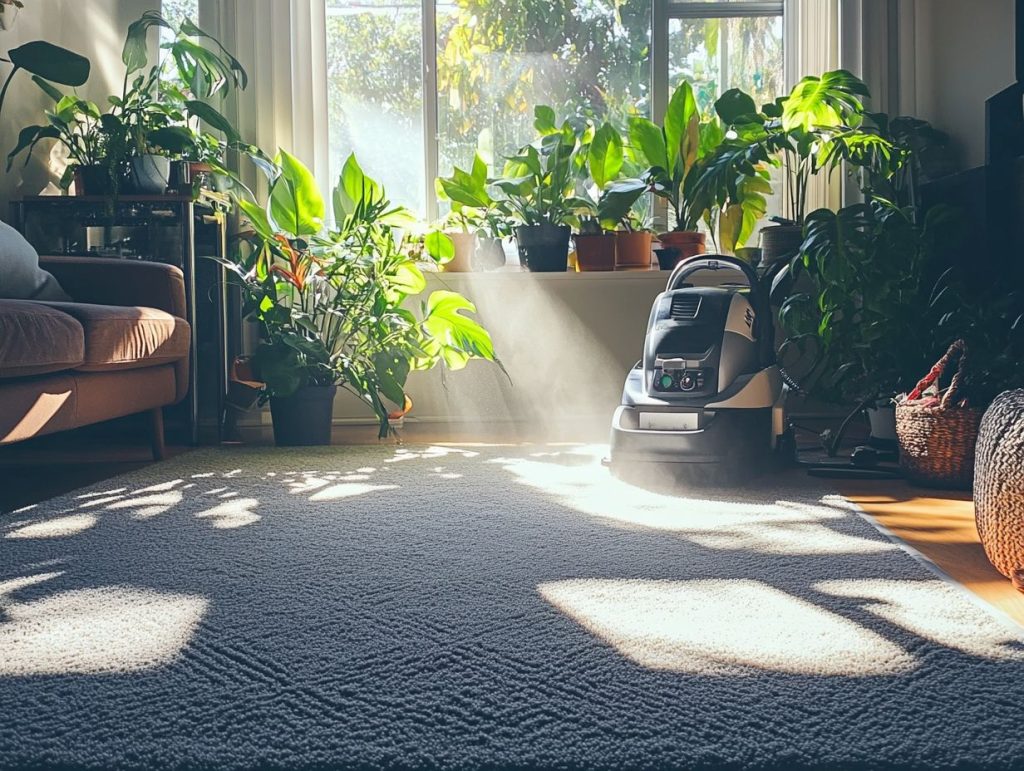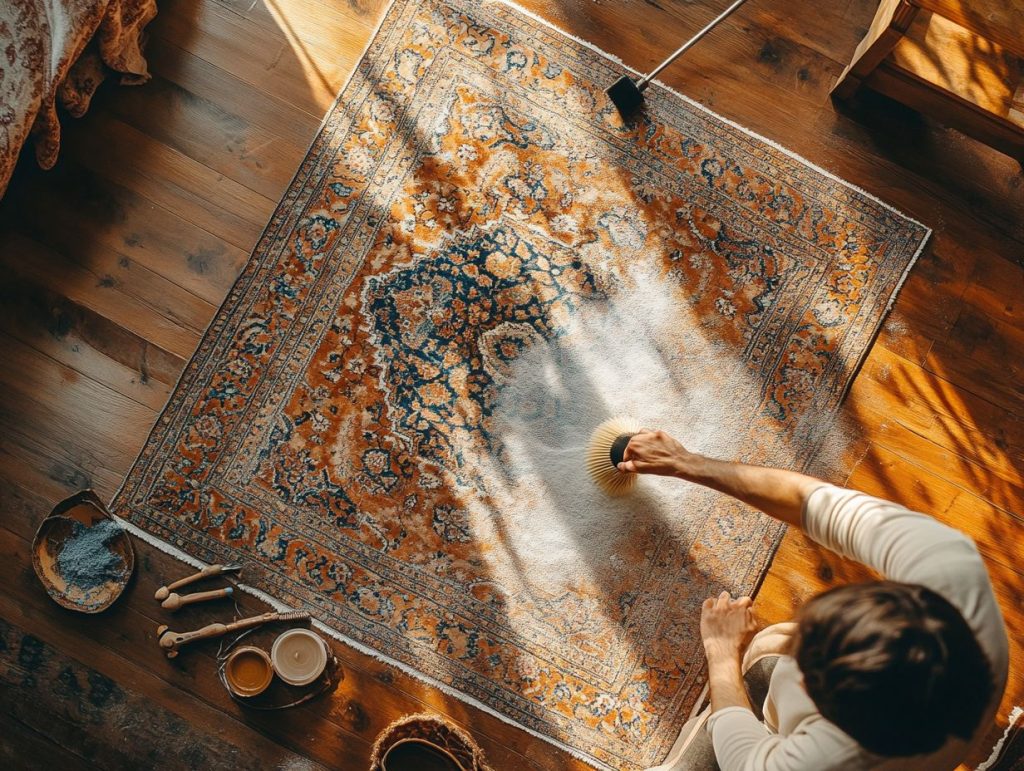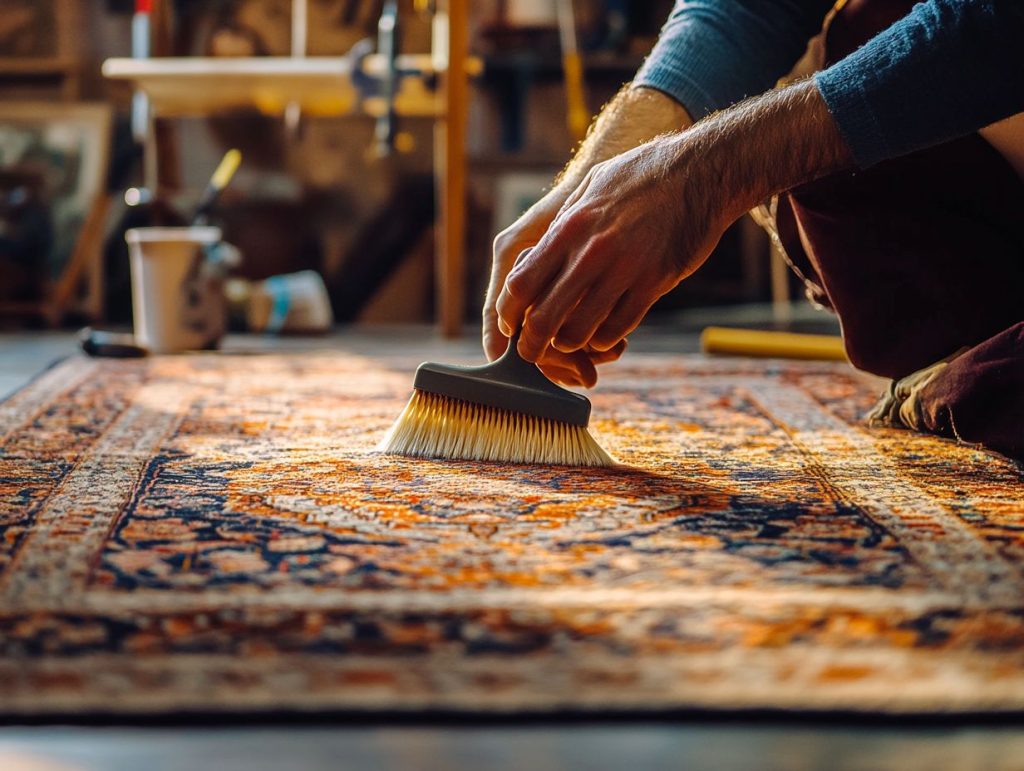We generally take indoor air quality at home for granted. Sure, we try to let in as much fresh air as possible and limit the use of ACs, but we rarely consider the effect our carpets might have on the air we breathe. One reason is that we do not see the inordinate amount of dust our favourite floor covering type accumulates over time. Another is the uncomfortable truth that vacuuming the carpets twice per month is nowhere near enough to address the issue.

Understanding Indoor Air Quality
Understanding indoor air quality (IAQ) is essential for keeping your home environment healthy. It involves various factors such as pollutants, allergens, and even the cleaning methods you use, which can impact your well-being and comfort.
If your indoor air quality is poor, you might face respiratory issues, allergies, and other health risks, so it’s important to find ways to improve it.
By becoming aware of what contributes to better IAQ, you can make informed choices that create a healthier living space and enhance your overall quality of life.
What is Indoor Air Quality?
Indoor air quality is all about the condition of the air inside your home and how it impacts your health and comfort.
Several factors influence this quality, including common culprits like mould spores, dust mites, and bacteria. These pesky contaminants can flourish in different environments, especially in places with high humidity or poor ventilation. For example, mould spores love to hang out in damp corners, which can lead to respiratory problems and worsen allergies.
Bacteria often lurk on unclean surfaces or in stagnant water, posing significant health risks. And let’s not forget about volatile organic compounds (VOCs) that come from household products; they add fuel to the fire, causing headaches, dizziness, and even long-term health issues.
So, understanding these elements is essential for keeping your indoor environment healthy.
Factors Affecting Indoor Air Quality
Quite a few factors affect the indoor air quality in your home, from your cleaning methods to any pollutants lurking about. You need to pay attention to things like ventilation, humidity, and how often you clean your carpets since they all influence the air you breathe.
By understanding these factors, you can make wiser choices that enhance your home environment and keep your family healthy.
Common Pollutants and Sources
Common pollutants in your home can include allergens like pet dander, dust mites, and those chemical cleaners you might be using.
These pesky pollutants often sneak indoors through open windows, shoes tracking in dirt, and even your air ventilation systems. The effect on air quality can be significant, especially if you or someone in your household has sensitivities or respiratory issues.
You can tackle this by sticking to regular cleaning methods, such as vacuuming with HEPA filters and using air purifiers to reduce the buildup of allergens and contaminants. Keeping an eye on humidity levels and ensuring proper ventilation also plays a key role in preventing mould and dust from taking over, ultimately creating a healthier living space.
The Link Between Carpet and Indoor Air Quality
Many people overlook the connection between carpets and indoor air quality, but it’s really important. Carpets can trap allergens, dust, and pollutants, harming your home’s air quality.
By maintaining regular maintenance and cleaning, you can minimise these issues and ensure your living space remains healthy and comfortable for your family. Understanding this link is key to effective carpet care and home hygiene.
How Carpets Can Impact Air Quality
Carpets can make a difference in indoor air quality by acting like a sponge for allergens and pollutants.
These versatile floor coverings trap dust, pet dander, and other airborne particles, which helps reduce the amount of those pesky elements floating about. As you walk across the carpet, the fibres hold onto these contaminants, keeping them from circulating in your home.
By regularly cleaning the surface and using proper carpet maintenance techniques, you not only tackle the visible dirt but also eliminate those hidden allergens. Plus, carpets are great for moisture control—they absorb excess humidity, which helps prevent mould and mildew growth, two major culprits behind respiratory issues.
The Benefits of Professional Carpet Cleaning
When you choose professional carpet cleaning, you’re opening the door to a range of benefits, particularly when it comes to improving your indoor air quality and eliminating allergens.
How Professional Cleaning Can Improve Air Quality
Professional cleaning can enhance air quality by eliminating allergens, dust mites, and other irritating pollutants in carpet fibres.
When you choose techniques like steam cleaning, you use high-temperature water vapour to penetrate deep into the fibres, achieving a thorough clean that regular methods often overlook. If you opt for eco-friendly cleaning agents, you are not just helping your home; you are also reducing harmful volatile organic compounds that can interfere with your indoor air quality.
Monitoring air quality during and after cleaning can demonstrate just how effective these methods are. Furthermore, specialised tools like HEPA vacuums help capture even the tiniest particles that can cause respiratory problems.
Professional cleaning becomes essential for maintaining a clean and healthy indoor space with all these strategies in play.
Additional Tips for Maintaining Clean Air in Your Home
Keeping the air in your home fresh and clean goes beyond just regular carpet cleaning; it’s all about taking a holistic approach to indoor air quality.
Other Ways to Improve Indoor Air Quality
There are plenty of effective ways to boost indoor air quality beyond just cleaning the carpets.
Consider incorporating methods like improving ventilation and using air purifiers; these can transform the atmosphere in your home. Opening windows to let in some fresh air can help dilute indoor pollutants and lower the concentration of allergens. Investing in high-quality air purifiers with HEPA filters can also be a game-changer, trapping dust, pet dander, and other pesky particulates—it’s a smart move for your health. Furthermore, managing moisture levels with dehumidifiers can help prevent mould growth, another common allergen.
These combined solutions enhance your air quality and create a healthier living space overall.

